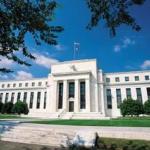 “We will develop ambitious but realistic policies with the aim to lift our collective GDP by more than 2 percent above the trajectory implied by current policies over the coming 5 years,” declared the G20 statement. The communiqué was released Saturday following a two-day meeting of Group 20 finance ministers and central bankers, representing about 85 percent of the global economy, in Sydney, Australia.
“We will develop ambitious but realistic policies with the aim to lift our collective GDP by more than 2 percent above the trajectory implied by current policies over the coming 5 years,” declared the G20 statement. The communiqué was released Saturday following a two-day meeting of Group 20 finance ministers and central bankers, representing about 85 percent of the global economy, in Sydney, Australia.
“We are putting a number to it for the first time — putting a real number to what we are trying to achieve,” said Australian Treasurer Joe Hockey. “We want to add over $2 trillion more in economic activity and tens of millions of new jobs.”
What to make of the enthusiastic words? Here we’ll defer to German Finance Minister, and all around killjoy, Wolfgang Schauble for a thoughtful assessment of the G20’s plans…
“What growth rates can be achieved is a result of a very complicated process,” noted Wolfgang Schaeuble. “The results of this process cannot be guaranteed by politicians.”
In other words, prosperity cannot be legislated into existence. Political medicine men cannot promise wealth by decree. Nonetheless, this is the very conceit of their lofty trade…
Creating Massive Asset Bubbles
Is adding “over $2 trillion more in economic activity and tens of millions of new jobs” possible? Sure it is possible. In fact, it may even be achieved.
But it won’t be Hockey or the other clowns attending the G20’s doing. They are a burden, not economic growth providers. The best thing they can do is stop manipulating units of money and credit.
The other thing they can do is limit the profusion of regulations their cohorts in their respective capitol buildings spew on the economy. When people have the freedom to enjoy the fruits of their labors, including money and property, they’re inclined to work hard, be creative, and take calculated risks. Why bother if you’re going to be penalized for your success?
The inflationary policies of central bankers and finance ministers unquestionably penalize people who work hard and diligently saving. At the same time, inflationary policies benefit the wealthy…those with the capital to own lots of assets. As asset prices are inflated their wealth balloons along with it.
This is the main reason why the income gap has gone so haywire in recent years. The wizards at the Fed believed their policies of mass money creation would create new jobs and economic growth. Instead, they created massive asset bubbles and benefitted the ultra-wealthy.
Shattering the Fed’s Hall of Mirrors
Of course, asset prices, including stocks, will eventually deflate. We don’t know when. Quite frankly, we’re surprised the price run up has gone on as long as it his.
But, eventually, all the Fed funny money that’s pumped stocks up over the last five years will run out of gas. Perhaps it’ll be the continued tapering of QE. Or maybe it’ll be the conclusion of ZIRP and the raising of the Federal Funds rate.
The broad realization that the stock market is overvalued and that the economy’s mixed performance is due to more than just bad weather could also be the pin that pricks the asset bubble. Or it could be none of these things. The point is, there will be a sustained drop in stock prices…you can count on it.
Don’t believe us? Maybe you’ll believe Jim Grant, founder and editor of Grant’s Interest Rate Observer. Here’s what he said yesterday on CNBC’s Squawk Box…
“My fear is because interest rates are suppressed, therefore earnings are inflated. So when rates go up … the ‘hall of mirrors’ is shattered and we look at each other and see what actually is real rather than what the Fed wants us to believe.”
Yet even more worrisome than crashing stock prices is the following question: What will the Fed be compelled to do when their hall of mirrors is shattered?
Unfortunately, we may soon find out.
Sincerely,
MN Gordon
for Economic Prism
Return from Shattering the Fed’s Hall of Mirrors to Economic Prism




